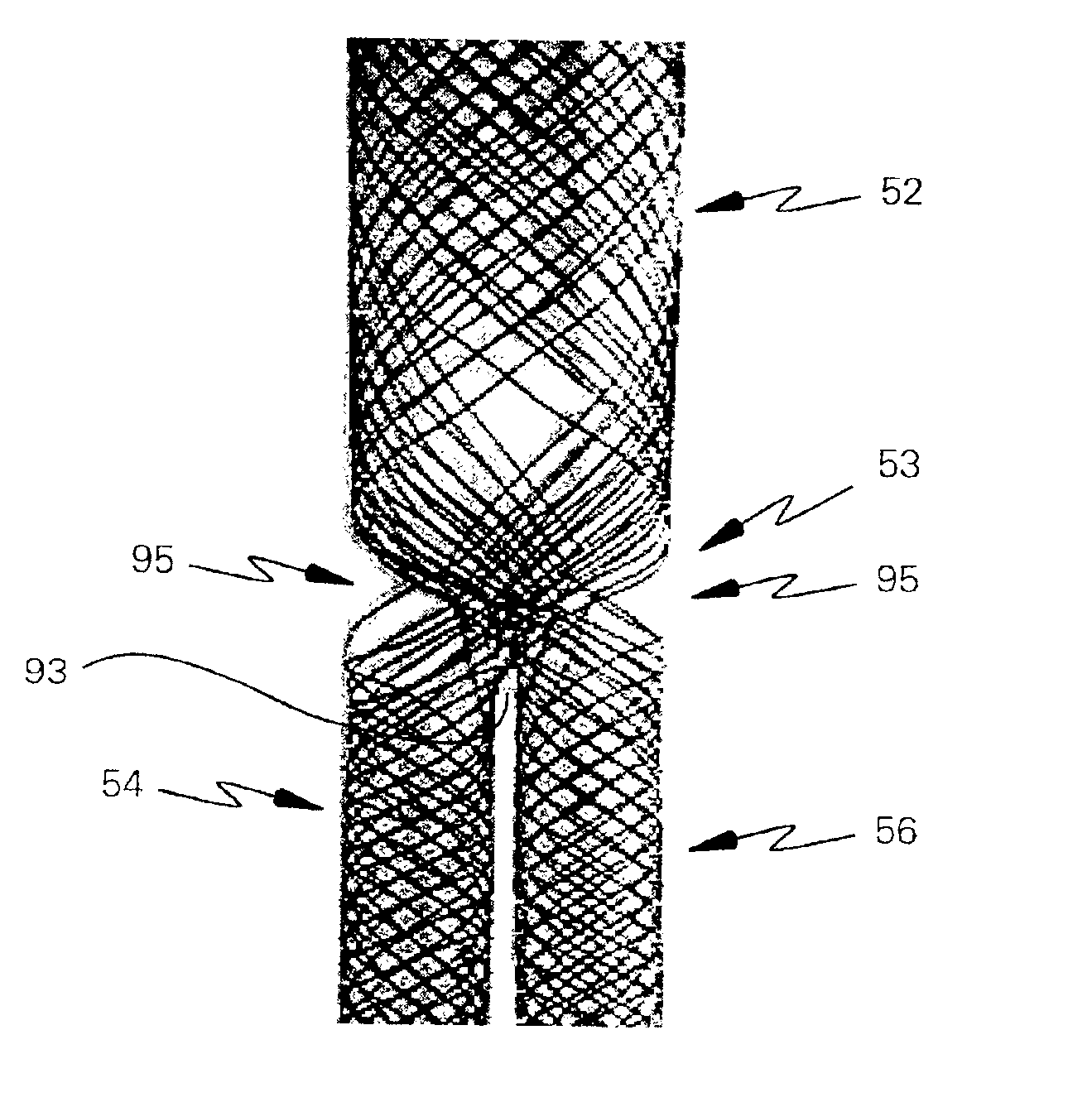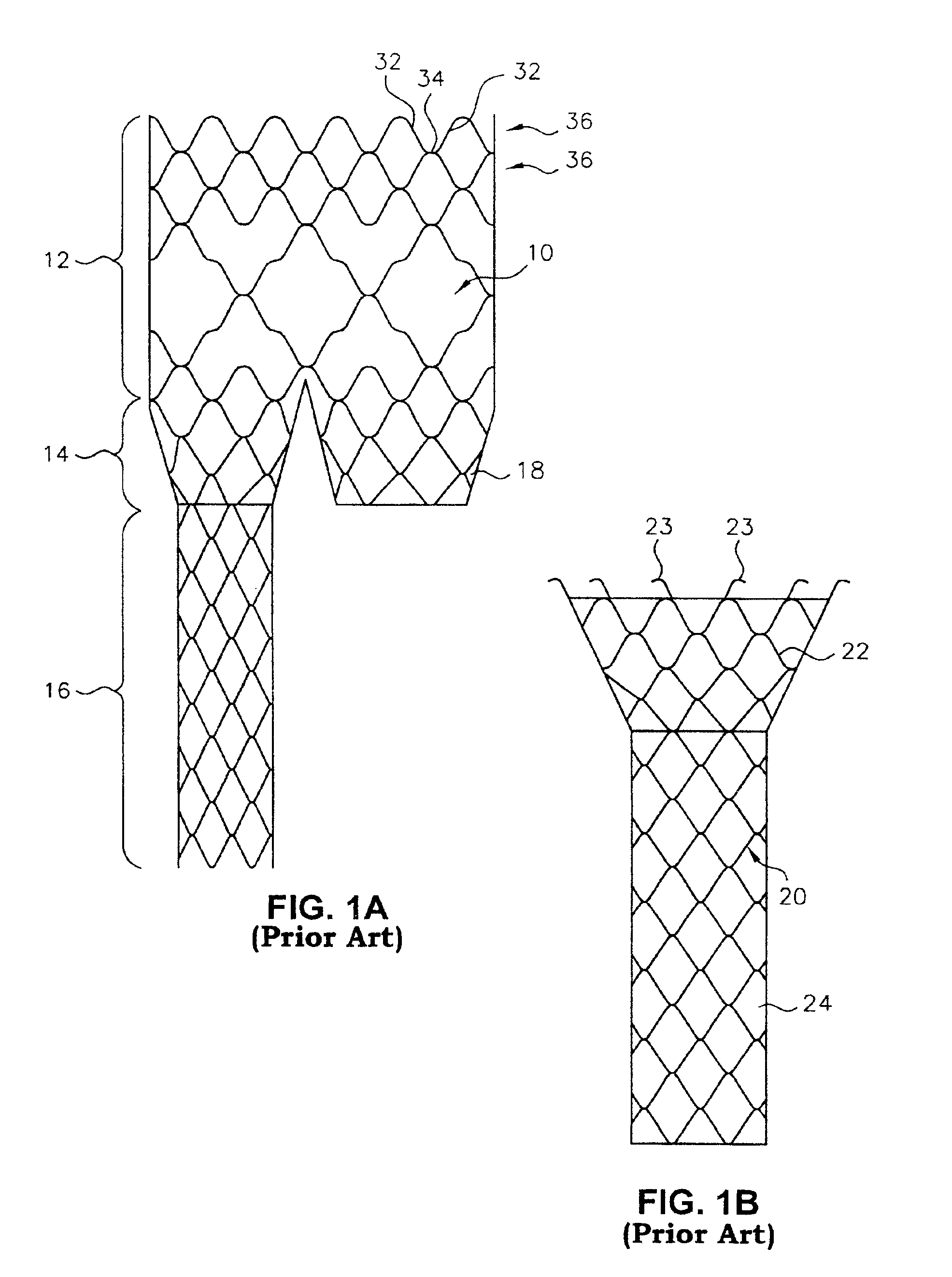Braided branching stent, method for treating a lumen therewith, and process for manufacture thereof
a branching stent and lumen technology, applied in the field of braided stents, can solve the problems of stent designs having a zig-zag stent architecture, wear in the graft, and larger deployment profile, and achieve the disadvantage of potential graft wear, and the design of zig-zag stents still has the same disadvantag
- Summary
- Abstract
- Description
- Claims
- Application Information
AI Technical Summary
Benefits of technology
Problems solved by technology
Method used
Image
Examples
Embodiment Construction
[0052]The entire disclosure of U.S. patent application Ser. No. 09 / 494,704, filed Jan. 31, 2000, is expressly incorporated by reference herein.
[0053]The invention will next be illustrated with reference to the figures wherein similar numbers indicate the same elements in all figures. Such figures are intended to be illustrative rather than limiting and are included herewith to facilitate the explanation of the apparatus of the present invention.
[0054]Referring now to FIG. 3, there is shown a bifurcated, braided stent 50 according to the present invention. As shown in FIG. 3, the stent comprises a trunk section 52, a first iliac leg 54 and a second iliac leg 56. Stent 50 as shown in FIG. 3 is a unitary stent. That is, iliac legs 54 and 56 are continuous with trunk section 52, unlike modular stent designs in which two or more stent segments are assembled together to form the various parts of the stent (e.g., the trunk section and the two legs). As used herein, the term “unitary” means...
PUM
 Login to View More
Login to View More Abstract
Description
Claims
Application Information
 Login to View More
Login to View More - R&D
- Intellectual Property
- Life Sciences
- Materials
- Tech Scout
- Unparalleled Data Quality
- Higher Quality Content
- 60% Fewer Hallucinations
Browse by: Latest US Patents, China's latest patents, Technical Efficacy Thesaurus, Application Domain, Technology Topic, Popular Technical Reports.
© 2025 PatSnap. All rights reserved.Legal|Privacy policy|Modern Slavery Act Transparency Statement|Sitemap|About US| Contact US: help@patsnap.com



